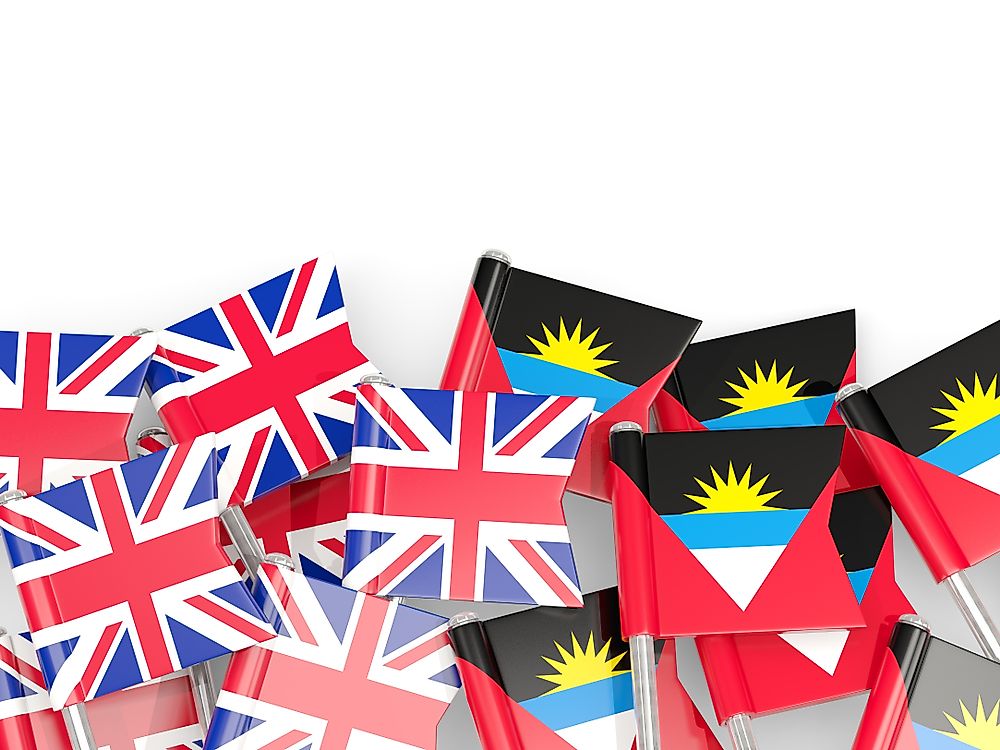What Languages Are Spoken in Antigua and Barbuda?

Antigua and Barbuda is a Caribbean island nation that has a population of around 91,295. These islands were originally inhabited by indigenous peoples, including the Arawak and the Carib, until the 17th century when British colonizers arrived. During this colonized period, English became the language of government, business, and education. When Antigua and Barbados gained its independence in 1981, it remained part of the Commonwealth of Nations and English remained its official language.
Antigua and Barbuda Creole English
As many of the residents in this country are descendants of African slaves, the common English spoken in this country has been influenced by African words and phrases. In fact, linguists consider the dialect spoken on these islands to be a type of Creole English, also known as Broken English, Leeward Caribbean Creole, and Patwa.
This dialect is spoken throughout the Leeward islands of the Caribbean and has around 150,000 native speakers. Speakers may choose to only speak in this creole variant or may switch between creole and Standard English mid-sentence. The use of Standard English is typically related to the socioeconomic status of the speaker. Those individuals of higher socioeconomic backgrounds have likely been educated in the formal school system and are more familiar with the grammar of the English language. Linguists believe Leeward Caribbean Creole first developed when African slaves attempted to imitate the language of their owners. Today, speakers may use words from British or American English in everyday communication. Additionally, with the increase of immigrants, this creole language is slowly being influenced by Guyanese Creole, Trinidadian Creole, Jamaican Creole, and Bajan Creole.
Immigrant Languages in Antigua and Barbuda
The most widely spoken immigrant language in Antigua and Barbuda is Spanish. Most Spanish speakers today are originally from the Dominican Republic and began coming to the country after 1981. Immigration records indicate that at least 1,200 Dominican Republicans are living in Antigua and Barbuda. Other records indicate that this population may be anywhere from 3,000 to 10,000 if undocumented individuals are included. Evidence of their permanent presence in this country can be seen in Spanish-language signs throughout urban areas, as well as the increased number of Spanish-speaking churches. In response to this large population of Spanish speakers, the government has implemented some public services in this immigrant language. One example of this is the warnings and advisories issued by the National Office of Disaster Services. In 2001, the Ministry of Education also responded by implementing a Spanish language program in public schools that have a high percentage of Hispanic students.
A very small percentage of the population reports having a Portuguese ethnic identity. Most Portuguese immigrants began arriving in these islands in the mid-19th century. These individuals became involved in importing goods to sell throughout the islands and eventually became known as retailers. Today, research indicates a population size of approximately 1,200 Portuguese speakers live in Antigua and Barbuda.
Additionally, North Levantine Arabic is considered another immigrant language of Antigua and Barbuda. This language came with the arrival of immigrants from the Middle East during the 20th century. Today, approximately 400 individuals in the country speak North Levantine Arabic.











